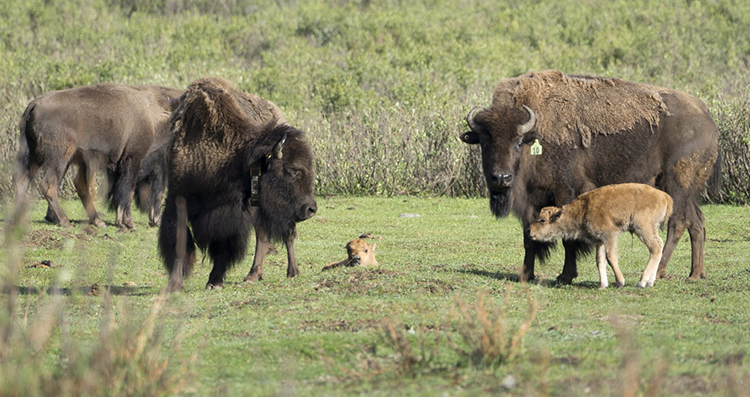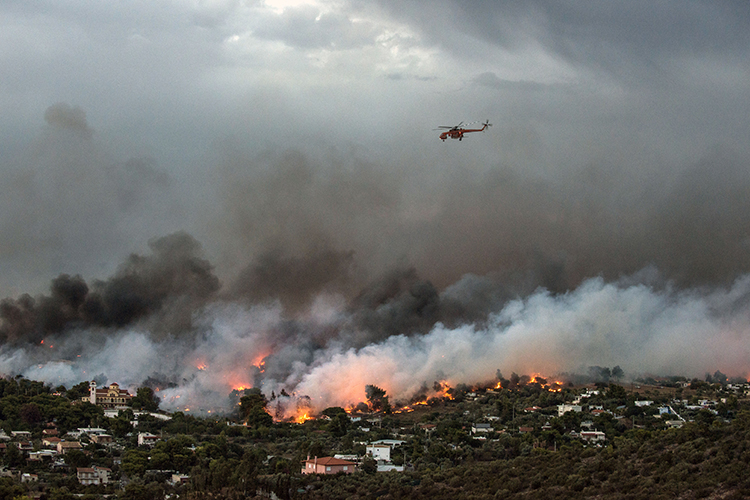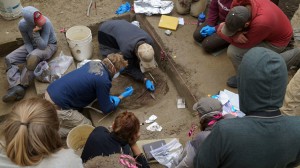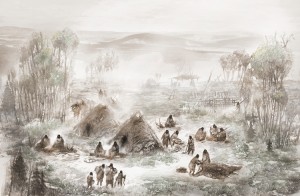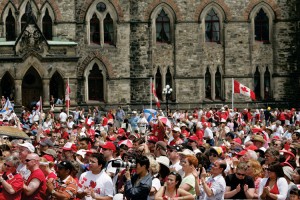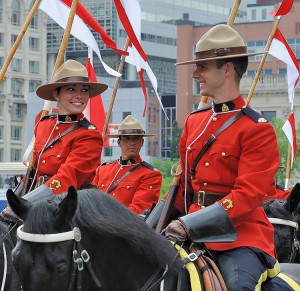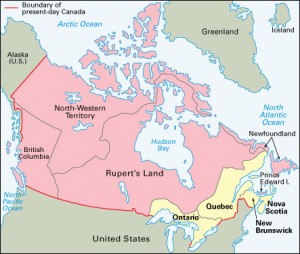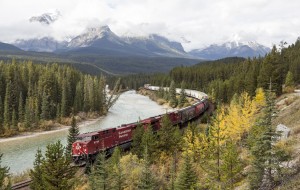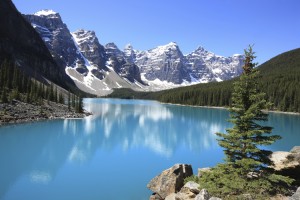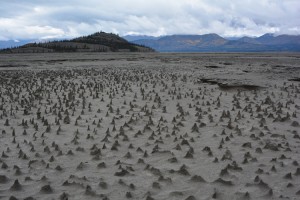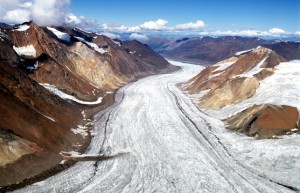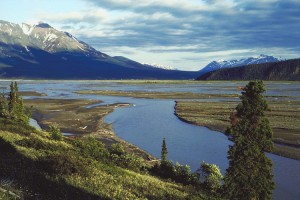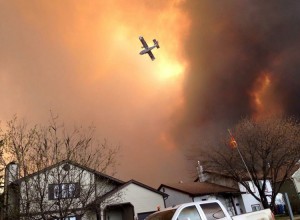Canada’s NBA Rapture
Wednesday, June 19th, 2019June 19, 2019
Last week, on June 13, the Toronto Raptors of the National Basketball Association (NBA) defeated the Golden State Warriors 114-110 to win the team’s first NBA championship. The Raptors won the best-of-seven finals four games to two. Raptors stars Kawhi Leonard, Kyle Lowry, and an underrated supporting team overcame Stephen Curry and his two-time defending champion Warriors to bring the first-ever NBA championship to Canada. The Raptors team, with its “We the North” slogan, celebrated the Canadian coup with nearly 2 million fans at a Toronto parade on June 17.

Kawhi Leonard of the Toronto Raptors lobs a shot over Golden State defenders during the sixth and deciding game of the NBA Finals at Oracle Arena on June 13, 2019, in Oakland, California. Credit: © Kyle Terada, Getty Images
The Warriors, one-time heavy favorites to “three-peat” (repeat a third time) as champions, played most of the finals without the nine-time All-NBA forward Kevin Durant. (A calf injury limited Durant to just 12 minutes before a ruptured Achilles tendon ended his postseason). The Warriors also lost the star shooting guard Klay Thompson to a hamstring injury in game three and a torn knee ligament in game six. Curry and teammates Draymond Green and Andre Iguodala failed to muster enough offense to keep up with the hungry Raptors, who delivered big plays in the series’s final moments.
The Raptors began the 2018-2019 season with high hopes, having acquired the top forward Leonard from the San Antonio Spurs in a trade involving longtime Raptors swingman (multi-position player) DeMar DeRozan last July. Toronto also netted the steady shooter and defender Danny Green in the transaction, and they picked up the center Marc Gasol in a deal with Memphis this February. The emergence of the rangy third-year forward Pascal Siakam gave the Raptors star power at every position.
Toronto finished the regular season with a 58-24 record, good for second in the Eastern Conference. The Raptors defeated the Orlando Magic in five games in the first round of the playoffs. The team then topped the Philadelphia 76ers in a hard-fought seven-game series. Toronto overcame a two-games-to-none deficit against top-seeded Milwaukee and its towering superstar Giannis Antetokounmpo, sweeping the last four games to close out the conference finals.
The Warriors, the most storied NBA dynasty since Kobe Bryant’s Los Angeles Lakers and Michael Jordan’s Chicago Bulls, finished 57-25 in the regular season, tops in the Western Conference. In the opening playoff round, the Warriors defeated the Los Angeles Clippers in a tough series that went six games. In Golden State’s second-round match up against the Houston Rockets, Durant exited after a game five calf strain. The Warriors still prevailed, however, and went on to sweep the upstart Portland Trail Blazers in the conference finals.
In game one of the finals in Toronto, the Raptors thrilled the home fans with a 118-109 victory over the Warriors—the first-ever NBA Finals game played in Canada. (The Raptors entered the league as an expansion team for the 1995-1996 season, and this was the team’s first finals. The only other Canadian NBA team, the Vancouver Grizzlies, never made the finals before moving to Memphis.) Toronto looked strong through halftime of game two, but the Warriors outscored the Raptors 34-21 in the third quarter and held on to win, evening the series at a game a piece.
The series continued on Golden State’s home court in Oakland, where the Raptors showed themselves to be the more complete team. Toronto won game three 123-109 and game four 105-92. Back in Toronto for game five, the Warriors overcame Durant’s postseason-ending injury, winning a tight 106-105 contest. In game six, Toronto stormed back after Klay Thompson’s injury, and Leonard, Lowry, and Siakam, together with the reserves Serge Ibaka and Fred VanVleet, proved invincible down the stretch. Leonard—who averaged 28.5 points, 9.8 rebounds, 4 assists and 2 steals per game in the series—won the NBA Finals Most Valuable Player (MVP) Award. The award was Leonard’s second; he earned finals MVP honors in 2014 as a member of the champion Spurs.
Finals game six was the last the Warriors will play in Oakland’s Oracle Arena, which first hosted games as Oakland-Alameda County Arena in 1966. Warriors fans enjoyed championship teams at the venue in 1975 and again during the team’s recent dominance in 2015, 2017, and 2018. Beginning next season, the Warriors will play their home games at the new $1.4-billion Chase Center across the bay in San Francisco.

